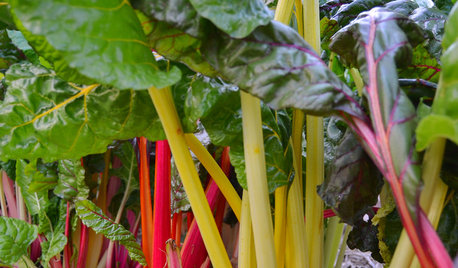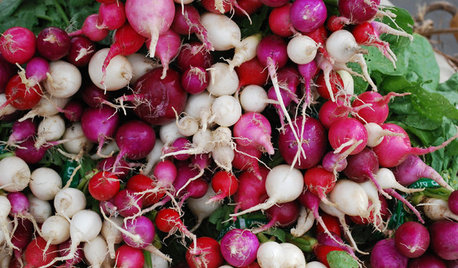vegetables that grow best - what does this tell me?
Shelley Smith
10 years ago
Related Stories

GARDENING GUIDESCool-Season Vegetables: How to Grow Chard
A year-round garden favorite with a colorful stem, Swiss chard comes into its own in early spring and in fall
Full Story
EDIBLE GARDENSHouzz Call: What Did You Grow This Summer?
Let’s celebrate the homegrown fruits and vegetables of the season. Post your pictures and tell us about your harvest
Full Story
COOL-SEASON CROPSCool-Season Vegetables: How to Grow Radishes
Fast growing and bright, these easy-care veggies are great for kids and bring plentiful color to a fall or spring garden
Full Story
FARM YOUR YARDCool-Season Vegetables: How to Grow Lettuce
Leaf, butterhead, crisphead or romaine — lettuce is best harvested in the cool weather of spring and fall
Full Story
EDIBLE GARDENSHow to Grow Your Own Peaches and Nectarines
Make gardening a little sweeter with these juicy fruits, which you can eat after plucking or preserve for later
Full Story
EDIBLE GARDENSHow to Grow Your Own Sweet Summer Crops
This guide will help any gardener get started on growing the freshest warm-season veggies and berries for summer
Full Story
EDIBLE GARDENSSummer Crops: How to Grow Tomatoes
Plant tomato seedlings in spring for one of the best tastes of summer, fresh from your backyard
Full Story
EDIBLE GARDENSSummer Crop: How to Grow Blueberries
Plant blueberries in spring or fall for garden beauty through three seasons — and a sweet superfood in summer
Full Story
SUMMER GARDENINGHow to Grow Basil
Bright color, quick growth and endless uses for cooking make this summer annual a winner in the garden or a pot
Full Story
SPRING GARDENINGSummer Crops: How to Grow Strawberries
Pluck your own sweet strawberries right from the garden vine for smoothies, salads or eating then and there
Full StoryMore Discussions







helenh
Shelley SmithOriginal Author
Related Professionals
New Mexico Landscape Architects & Landscape Designers · Saint Louis Park Landscape Architects & Landscape Designers · Waterbury Landscape Contractors · Byram Landscape Contractors · Columbine Landscape Contractors · Englewood Landscape Contractors · Fort Myers Landscape Contractors · Haverhill Landscape Contractors · Saint John Landscape Contractors · South Hackensack Landscape Contractors · Sun City Center Landscape Contractors · Waldorf Landscape Contractors · Fort Collins Decks, Patios & Outdoor Enclosures · Fort Worth Decks, Patios & Outdoor Enclosures · North Myrtle Beach Decks, Patios & Outdoor Enclosureshelenh
mulberryknob
Okiedawn OK Zone 7
Shelley SmithOriginal Author
Shelley SmithOriginal Author
Okiedawn OK Zone 7